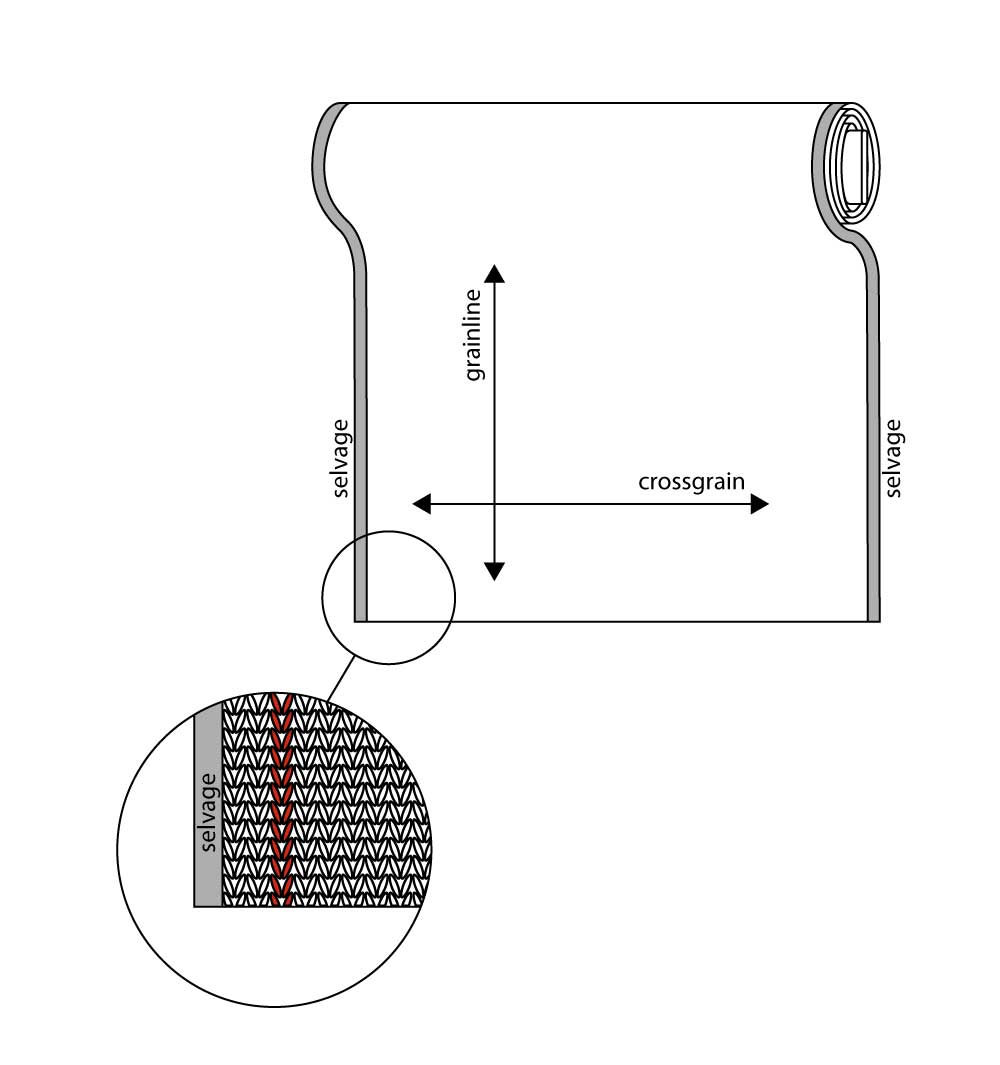Sewing with stretch fabric can be intimidating, but it doesn't need to be. Once you understand how to handle and sew these fabrics, it makes for easy and fast garments with minimum fitting required.
Nivis, the very first sewing pattern from Wearologie is a comfy raglan crop top designed for stretch fabrics. To help you make one for yourself, there will be a serie of posts specially geared toward learning to handle and sew with stretch fabrics.
Today, we'll begin with selecting your fabric.
With knits, it is especially important because if your fabric hasn't got about the same stretch amount as what the pattern calls for, you can end up with a garment that's too tight or that'll loose it shape too easily.
One way to categorize knits is by their percentage of stretch. There’s an easy method to find out the stretch amount in a fabric and we'll discuss it today.
Usually, the maximum stretch will be found on the crossgrain. Knit fabrics are either a 2-way stretch, meaning that it’ll only stretch across the crossgrain (selvage to selvage) or a 4-way stretch, which will stretch both on and across the grain.
Stretch and knit fabrics
In any case, you want to measure the percentage of stretch on the crossgrain to find out what you’re dealing with.
To do so, we’ll use a stretch and recovery gauge! This handy tool measures the amount of stretch the fabric has.
Use this stretch gauge to determine your fabric's stretch amount
At the same time, you can also note the recovery of the fabric. That way, you can determine if the fabric is suited for your project and you won’t be surprised if your well fitted t-shirt becomes a loose and baggy tee over time.
To use it, just print it and back it with a heavier paper or laminate it to keep it in your bag for your visits to the fabric store.
First start by folding the fabric in half along the grain.
Fold your fabric
With pins, measure a 10 cm/4″ section. On the stretch gauge, it's the part between the pins.
Try to avoid the edge of the fabric, to have an more accurate measurement because selvage and borders tend to have a different stretch.
Hold one pin aligned with the zero mark and stretch the fabric until it starts resisting. The trick here is to not overstretch it, you want to measure its natural stretch.
Stretch the fabric
Record the percentage of stretch your fabric has. Don't forget to check the stretch on both grains. A 4-way stretch fabric will give you different results depending on where the maximum stretch is.
Here's the stretch amount parallel to the selvedge...
And the crosswise stretch, quite a difference!
Then to determine the recovery your fabric has, let the pin go, while still holding the one at zero.
If the pin returns to its original location, perfect! It means it has a 100% recovery and won’t loose its shape easily. You could, for exemple, safely use it for active wear or swimwear depending on the fabric fibre content.
This fabric has an excellent recovery
If not, determine the amount of recovery you’re okay with and decide what to sew with accordingly.
To give you an idea of what you’re dealing with, here’s a quick guide about stretch fabrics and the different types of knits.
Stable knits usually can stretch to about 20% (like double knit, interlock…). Moderate stretch knits like nylon tricot go up to 25% while stretchy knits (jersey, terry knit) can stretch to 50%. Note that this category usually stretches 4-way.
Then the 75% to 100% stretch fabric have usually great recovery and are perfect for a swimsuit or active wear project. These typically include fabric with Lycra or Spandex in them.
That's it for today, next we'll talk about handling and cutting the fabric.









